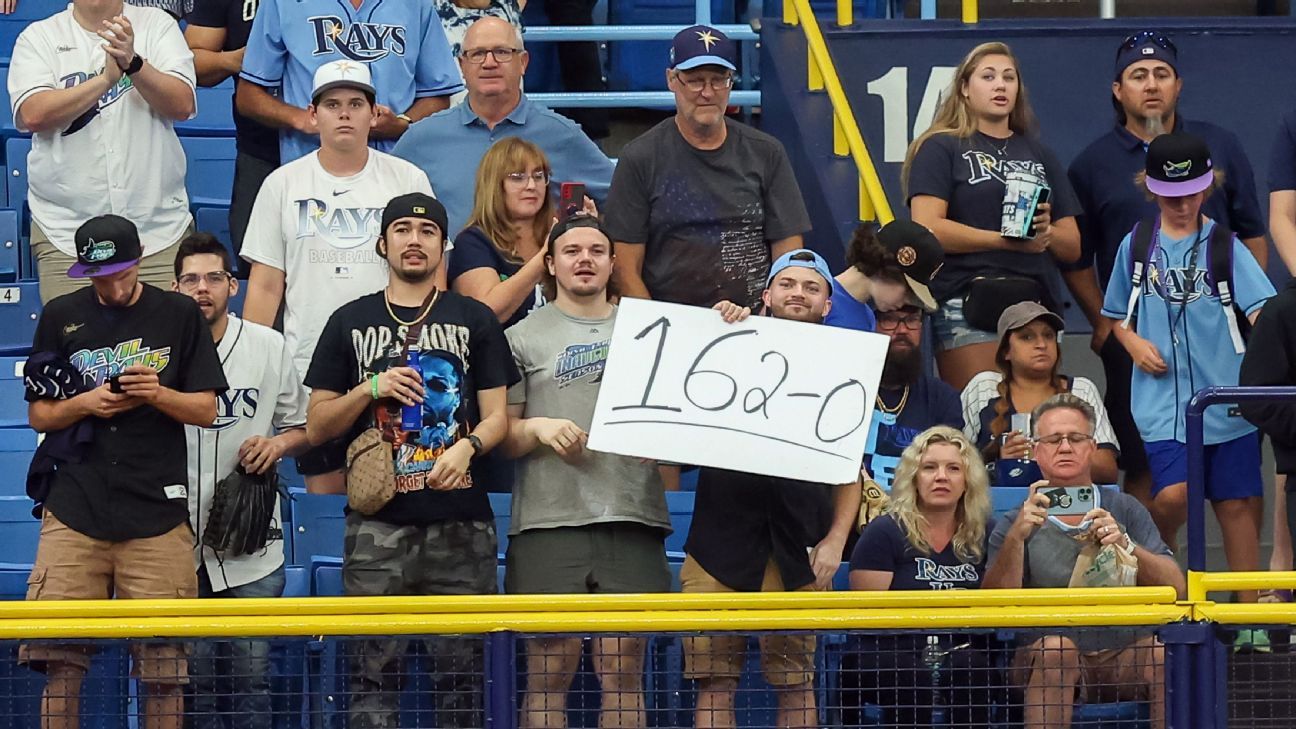Organizing the roughly 75 recruits visiting each day last month (primarily on unofficial visits), could have been overwhelming for Georgia Tech coaches. Each recruit needed a tour, face time with coaches and, maybe most importantly in the age of social media, to have their picture taken. But because of the work done by Patrick Suddes and his department, coaches didn’t need to worry.
Everything was organized. Suddes even connected with a local car dealer who loaned them a 1970 Pontiac GTO and a pair of Bentleys, which they parked inside Bobby Dodd Stadium for a music-video-worthy photo shoot.
Over at Ohio State, the Buckeyes have typically hosted 58 official visitors per year. But last month alone, they hosted 51, something made more manageable by the work of Mark Pantoni and his staff of 10 full-time employees.
Billy High, Pantoni’s counterpart at North Carolina, said the first month of in-person recruiting felt like “organized chaos.” He didn’t go anywhere without his trusted tablet, keeping track of vast spreadsheets showing where players ranked on their board, what other offers they received and where else they visited.
And to think, positions like his didn’t exist not that long ago. There was no college football equivalent of the NFL front office to oversee recruiting and roster management. No one called themselves a director of player personnel (DPP) until a clever assistant created the title in 2006 and one of the greatest head coaches of all-time noticed what it was and what it could be.
Now, college football can’t function without DPPs like Pantoni. Some have even embraced the broader and more recognizable title of general manager, like High and Suddes.
In addition to high school recruiting, they oversee another important avenue to acquire talent: the transfer portal, which is college football’s version of free agency. It’s up to the heads of personnel departments to keep their ears to the ground and their eyes on the portal, pointing coaches toward players they should be targeting.
LSU didn’t sign potential difference-makers like Clemson linebacker Mike Jones Jr. and Georgia safety Major Burns by accident. Austin Thomas, who became the first GM in SEC history, oversees an advanced scouting department in Baton Rouge that provides coaches with in-depth dossiers on players the instant they become available.
Besides the head coach, there’s arguably no one with more influence on a team’s future.
The idea of a personnel department isn’t new to the NFL, where it isn’t unusual for general managers to wield more authority than the head coach. But for one reason or another, the concept of a formalized unit dedicated to roster management took a while to trickle down to colleges, where coaches handled personnel decisions themselves, tabbing one of nine assistants to take on the role of recruiting coordinator.
Granted, these were much simpler times — before social media and Internet-based video services like Hudl created a mountain of information to sort through; before the race to offer freshmen and sophomores more than doubled the number of players who needed to be evaluated; before the advent of the transfer portal, which can give just as quickly as it takes.
As everything was beginning to change back in 2006, Geoff Collins was searching for an excuse to return to Georgia Tech, where he previously worked as tight ends coach under George O’Leary. Chan Gailey, who had taken over for O’Leary, was interested, but he didn’t have a coaching position available, so he instead offered up the director of high school relations post.
Collins, who was coming off two years as a defensive coordinator at Western Carolina, saw it as a possible dead end and was hesitant — he wanted a role that would give him flexibility. If he couldn’t get back into coaching, he thought he might like to transition to an NFL front office. He had noticed how people at the pro level were being named director of player personnel, so he asked about creating that position instead.
Gailey didn’t care about semantics.
“Call yourself whatever you want,” he told Collins.
And just like that, Collins became credited as the first DPP in college football. He oversaw recruiting and helped Tech sign arguably its best class ever.
Meanwhile, Nick Saban was in the process of leaving the Miami Dolphins for Alabama, and one of his top priorities was building an NFL-style personnel department. He believed he could create the biggest impact advantage over other programs in recruiting, so he poured resources into it. He wanted someone in charge who had an understanding of the college game, so he called Collins.
Collins accepted the job, and began putting together a room of student volunteers, graduate assistants and anonymous support staffers that would serve as the machinery in Alabama’s larger recruiting operation. They were young and hungry. They worked, quite literally, in darkness: a windowless office that they staffed around the clock in rotating shifts.
They’d send hundreds of blank VHS tapes to high school coaches, cursing when they inevitably came back in the wrong format. Highlights were useless. What they really wanted were entire games, which they’d then splice by a process known as “one’ing and two’ing,” and is exactly as mindless as it sounds.
The real intrigue came when evaluating the tape, but even that was formulaic, relying on a predetermined set of critical factors at each position which, taken together, provided every recruit with a grade. And if their grade was good enough, their information was passed up the ladder where coaches would begin the more traditional recruiting process.
What Collins and Saban were doing was attempting to remove the guesswork from recruiting, taking what essentially had been an art form and applying processes to it, creating a more scientific approach. Instead of leaving assistant coaches to their own devices and their own thoughts on what made a successful football player, the personnel department followed strict guidelines determined by the head coach.
Collins managed the evaluation process and helped coaches connect with recruits. He was by Saban’s side every day, getting what he called a “doctorate” in the how-tos of coaching and roster management — things such as how many players to recruit at a position in a given year, which had to be viewed through the lens of the current roster makeup and anticipating future attrition via the NFL draft, graduation or transfers.
Collins left after one season to reunite with O’Leary at UCF, resuming on-field coaching. Twelve years later, he was named head coach at Georgia Tech.
“So I think I was the first and the second director of player personnel,” Collins said. “And I take a lot of pride in it, because I think a lot of people have been able to go on and do some things, and it has become a positive role for college football programs.”
In the ever-expanding tree of directors of player personnel, Collins is the only one to become a head coach. But that’s not a negative. It shows there’s a place for non-coaches to have meaningful careers in college football, where before those opportunities for advancement were limited to the NFL.
When Collins returned to Tech as head coach, one of his first calls was to his old co-worker at Alabama, Suddes, who had gone on to work at Texas, Arizona State and Auburn. Suddes had never been a coach and had no aspirations to be. He was the kid who played “NCAA Football” on dynasty mode, simulating the games so he could get to the fun part of tinkering with the roster. When he played “Madden,” he’d trade every player, stockpiling draft picks.
Collins knew that he and Suddes saw the game the same way, that he could trust him to rebuild the roster and help reshape the image of Georgia Tech football. So rather than making him yet another DPP, he switched things up.
Collins chuckled when asked why he landed on the title of general manager for Suddes. It wasn’t arbitrary.
“It was intentional,” Collins said. “I wanted him to have an overarching reach within the organization.”
While Collins is Patient Zero in the DPP experiment in college football, he’s not the only one who made the position what it is today. His successor, Ed Marynowitz, took it to another level.
Suddes called Marynowitz “one of the godfathers” of the profession, building upon and bringing even more sophistication to the systems Collins started. His work was so well regarded that the Philadelphia Eagles hired him as VP of player personnel in 2015.
The other so-called godfather is Mark Pantoni.
Around the time Alabama’s recruiting operation got going under Collins and Marynowitz, Pantoni was getting his feet wet under coach Urban Meyer at Florida. In the beginning, it was a way of avoiding the mountain of debt awaiting him on the other side of med school interviews and whatever long road awaited after. He was a football fan who loved recruiting, so he figured why not take a year to intern with the team?
He got the job and trekked into the office where he’d send out VHS tapes at 6 every morning, splice film in the afternoon and then ask for even more to do before day’s end. He grinded for a year, learning the tricks to the trade, before Meyer hired him full time.
Pantoni never wanted to be a coach, either. He imagined becoming an athletic director, but fell in love with the world of personnel, watching countless hours of film and forming evaluations he’d then pass to the coaching staff.
Meyer empowered him, allowing for disagreements and healthy debates. Meyer had the final say, of course, but Pantoni said Meyer didn’t want a yes man. Though Pantoni was hesitant in the beginning to stand up to veteran coordinators Charlie Strong and Steve Addazio, he gained more confidence in his opinions, and they would listen, trusting that he was watching exponentially more film than they ever could.
But it wasn’t just the evaluations that Pantoni grew to be in charge of. DPPs are largely responsible for compliance and the recruiting budget, which includes money for coaches’ travel and official visits, as well as the use of online recruiting services and databases.
When Meyer retired and popped up again at Ohio State in 2012, he hired Pantoni a second time, and he inherited a department of two.
Now, Pantoni oversees a group of three full-time employees and one full-time intern dedicated solely to personnel, a director of on-campus recruiting and a five-member creative team. That’s to say nothing of the hoard of student volunteers.
He and Marynowitz started a personnel symposium three years ago in which about 80 people showed up. The next year, that number ballooned to 300.
While COVID-19 caused them to cancel last year’s event, they hope to pick it up again soon.
So much in the sport is changing. Support staffs have grown exponentially, the transfer portal has finally brought free agency to college football and advanced analytics, which have taken off in professional sports but struggled to gain a foothold in college, are beginning to make strides. What’s more, the ability for athletes to profit off their name, image and likeness is a game-changer in terms of helping players build their brands. There’s no choice but for personnel departments to keep up with demand.
“It’s going to continue to evolve and parallel the NFL front office,” Pantoni said.
Assistant coaches have to focus on their specific position for advancement, head coaches have to focus on winning immediately in order to keep their jobs, leaving it to DPPs and GMs to manage the long-term picture.
“You’re recruiting so many classes of kids; we have 2025 kids we’re offering now. There’s just so much that goes into it,” Suddes said. “The coaches have so much they have to deal with coaching X’s and O’s, dealing with players on and off the field, and then contacting these recruits. A coaching staff of 10 and the head coach just can’t handle it all.”
The personnel tree grew quickly out of Alabama.
As Saban’s recruiting operation kicked into high gear and started raking among the top three classes every year, whispers circulated about what was going on inside that windowless office. The college football world watched as Saban’s former assistants became head coaches, and how like clockwork they’d take someone from that office with them. Georgia’s Kirby Smart hired Marshall Malchow, Michigan State’s Mel Tucker hired Geoff Martzen, Ole Miss’ Lane Kiffin hired Matt Lindsey, and so on.
Opposing coaches got the bright idea to do the same.
“They were all cherry-picked by teams trying to do what Nick did,” Suddes said.
He should know. After six years at Alabama, Mack Brown brought Suddes to Texas. And when Brown later resurfaced at UNC, he hired High, who had worked for Suddes at Auburn, picking up the nickname Billy Spreadsheets.
There’s also a lot of cross-pollination that happens. High just so happened to be working at Tennessee at the same time as Thomas. And upon returning to LSU in January, Thomas, who was associate athletic director for football personnel at Texas A&M from 2018 to 2019, was replaced by Malchow.
Thomas is relatively young, only 36 years old, yet he’s already excited to see what the next generation is capable of — that’s how quickly this field is growing. There’s plenty of room for those without direct connections to Alabama or Florida.
Andy Frank, who went to school at Princeton, gave up a career in engineering and climbed his way up from volunteer to DPP at Vanderbilt and now Penn State. Jordan Sorrells left his job as operations manager at Chick-fil-A to become director of football ops at Furman and is now DPP at Clemson.
When Dabo Swinney spoke to reporters about how Clemson’s 2020 class came together, he said, “Jordan Sorrells. You’ve got to start there.”
What’s neat, Thomas said, is not just how many more people there are in his business or how they’re starting to receive more recognition; it’s how they’re starting to see their responsibilities expand beyond recruiting.
Serving as GM, Thomas acts as a liaison between the administration and the football program, and he is part of the process identifying candidates for assistant coach and other roles within the organization. LSU keeps expanding its ranks, bringing in a director of scouting, a director of personnel research and a director of recruiting.
Thomas studied NFL front offices a few years ago, leaning on contacts he had with the New York Jets and Houston Texans, and he decided to recreate their advanced scouting departments to suit college football. Their ability to help identify transfers is only one piece of what they do; they also aid in game-planning during the season.
“You think about it, it’s strength staff, training staff, nutrition staff, analysts, recruiting staff, personnel staff … it’s a lot of people,” Thomas said. “If a head coach doesn’t have help with that stuff to carry his message and implement that on a daily basis, it can go sideways really quick.”
And therein lies the biggest difference between the GM of the NFL and college. It’s simple, really. GMs in college have a lot of authority, but they’re essentially serving as the right-hand to the head coach, who has the ultimate authority.
“I work for Coach O,” Thomas said. “He doesn’t work for me.”





